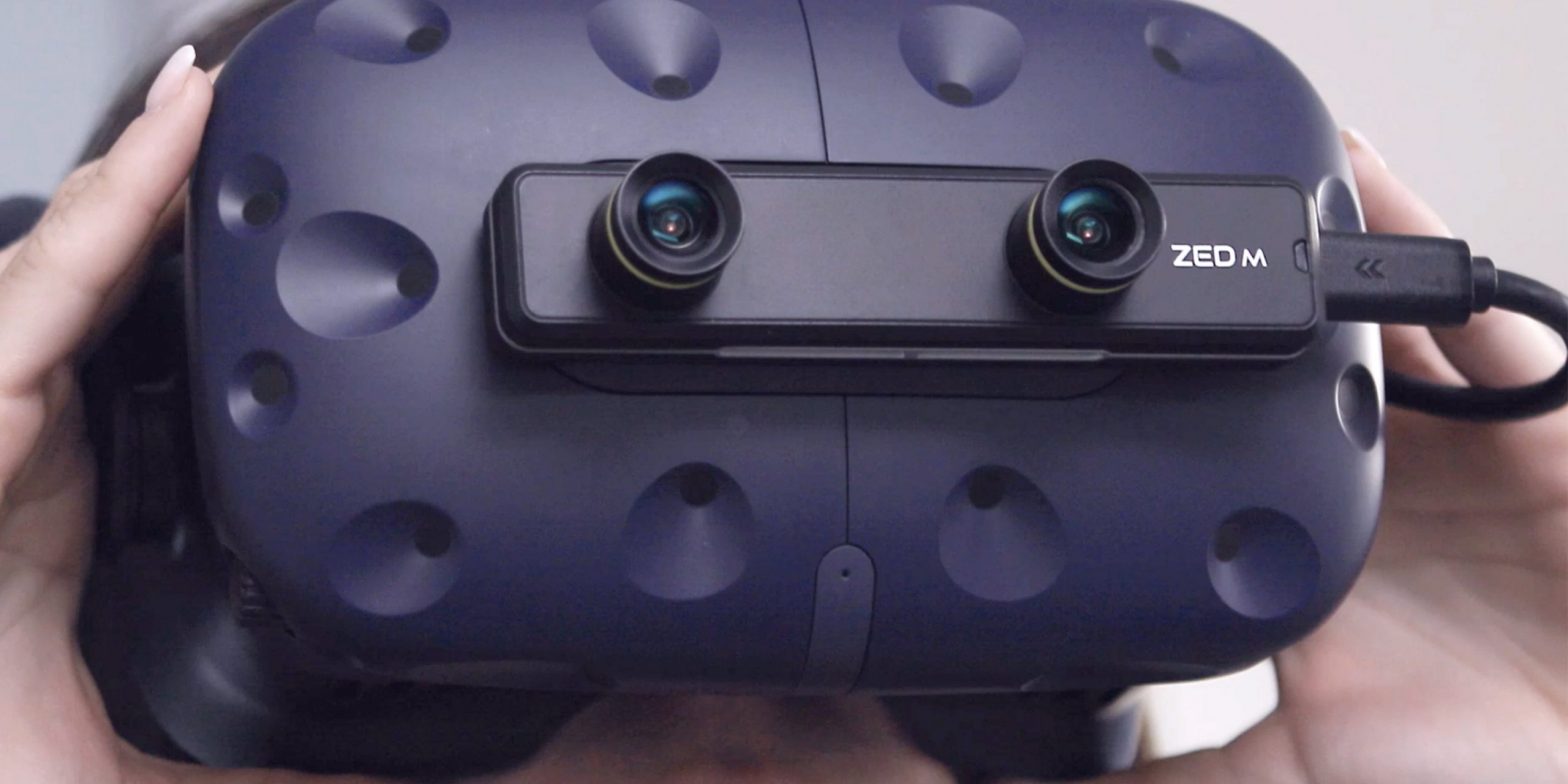Invrsion developed an augmented reality experience to test how the environment a person is in affects how a food product tastes.
By putting on a VR headset integrated with a ZED Mini stereo camera, the user can see his hands and real food through the camera. But everything else—the table, walls, floor, decoration—is replaced by a virtual environment. Researchers can change the virtual environment to see how it affects how the product tastes to the user.

For example, the ambiance of a fancy Italian restaurant can make a pasta dish taste better than when it’s served the exact same way at home. Researchers could likewise change smaller things, like replacing the tablecloth or adding candle light, to find exactly how to maximize the perceived value of their food.
This kind of experience, called “Augmented Virtuality”, is particularly useful since context is known to have a big influence on product experience, and not just in food. That means small changes in presentation can make big differences in a customer’s purchase intention. By researching this contextual influence, industries can optimize the experience to maximize how products are perceived and to get insight on how to price them.
A more well-known example is cosmetics. A face cream featured in a mass market channel may be perceived as worth less than if it’s presented in a perfume shop. Using Augmented Virtuality, a brand can anticipate this influence accurately ahead of time by presenting a single face cream to some respondents in a VR simulated supermarket and to others in a VR perfume shop.
The retail and consumer packaged goods (CPG) industries conduct such contextual research very frequently. But without Augmented Virtuality, conducting this research is expensive and time-consuming, while offering far less flexibility to the researchers.
“The hyper-realism and immersion of our Virtual Reality simulations enable our clients to conduct research gaining reliable shopper insights,” said Matteo Esposito, Invrsion’s CEO and co-founder. “Augmented Virtuality allows them to test food products under better user experience, as the respondents would use their own hands instead of VR controllers and see the actual product. That’s how we came across the idea of integrating the ZED Mini stereo camera into our simulation”.
Invrsion is specialized in Virtual Reality solutions enabling CPG brands and retailers to simulate in-store activities before implementation, ranging from trade marketing and category management, to consumer research, store/layout design or remodeling, employee and sales force training.
The ‘pass-through AR’ capabilities of Stereolabs ZED Mini stereo camera is what makes this research possible. First, it captures the video in front of the user so that it can be viewed inside the VR headset as if the user wasn’t wearing one at all. Next, Invrsion uses the depth map generated by Stereolabs’ library to only show real objects closer than 1m/3ft from the cameras (i.e. food, hands) whilst everything farther (i.e. walls, floor) is replaced with the virtual environment.

“AR simulations like Invrsion’s are why we built the ZED Mini,” said Cecile Schmollgruber, CEO of Stereolabs. “To change their user’s environment to this level, Invrsion needed a device that could capture stereo video from the front of the headset while simultaneously building a detailed 3D ‘depth map’ from it. That’s how their software can separate their food and hands from everything else. Nothing but the ZED Mini’s passive stereo depth sensing is practical for this.“
Invrsion offers a SaaS solution to create any retail projects and experience them in hyper-realistic Virtual Reality. Augmented Virtuality is developed on demand on a project basis and Invrsion is looking to make the VR environments available also for an Augmented Virtuality usage. Invrsion’s technology can be integrated by bio- and neuroscientific devices to get deeper consumer insights during research fields.
